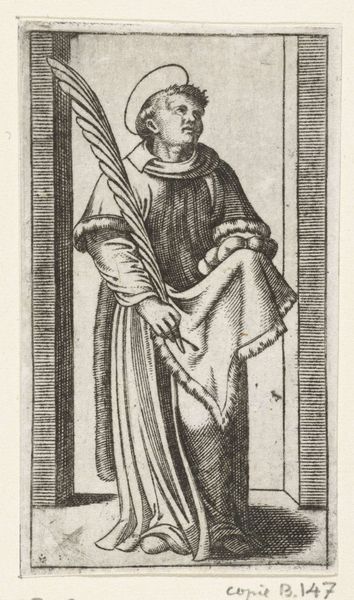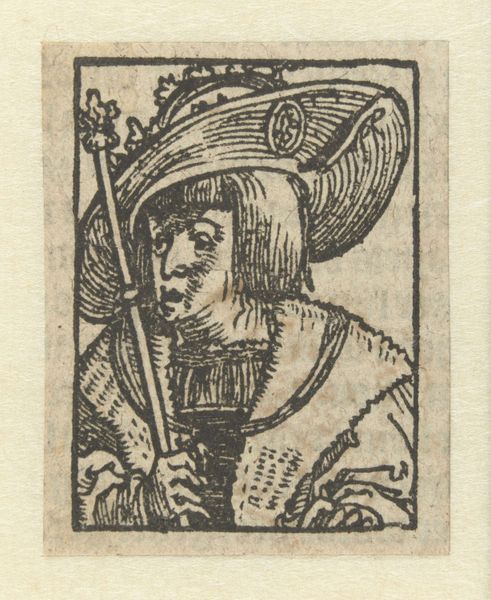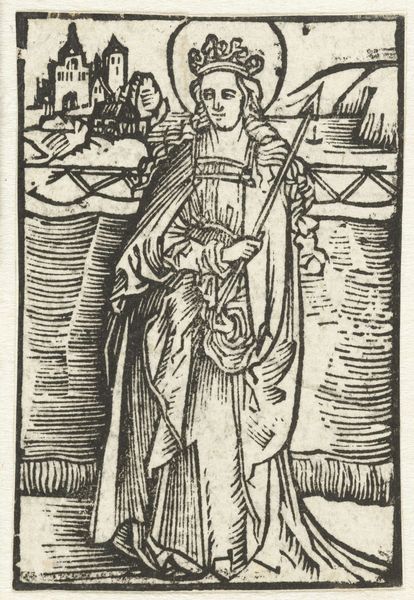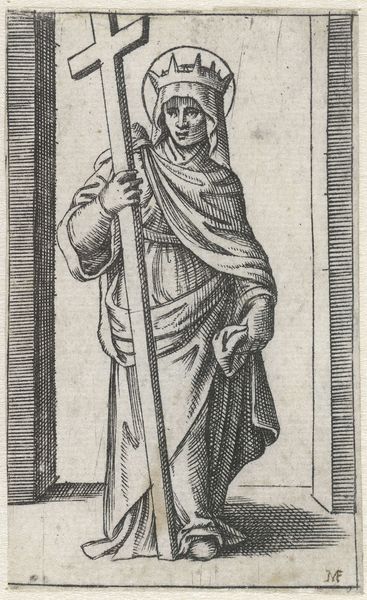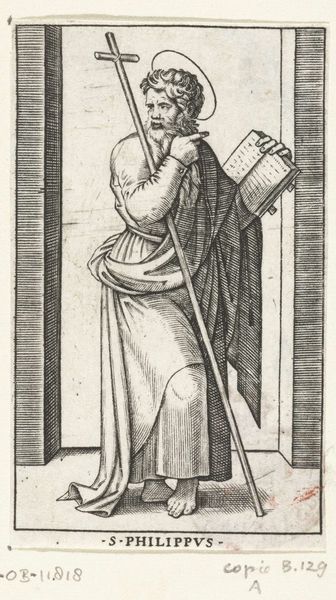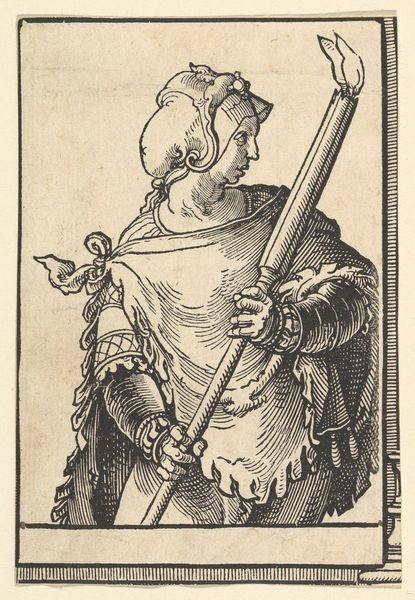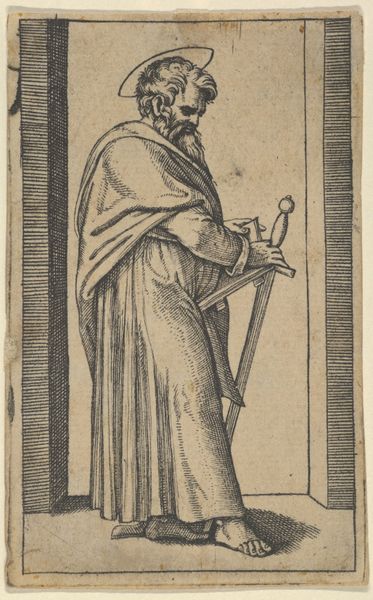
#
mechanical pen drawing
#
pen illustration
#
pen sketch
#
pencil sketch
#
old engraving style
#
personal sketchbook
#
pen-ink sketch
#
pen work
#
sketchbook drawing
#
sketchbook art
Dimensions: height 84 mm, width 64 mm
Copyright: Rijks Museum: Open Domain
Curator: Here we have "Portret van Karel V," or "Portrait of Charles V," crafted around 1517 by Lucas van Leyden. Editor: It's remarkable how much the artist captures with what seems like a collection of very delicate, fine lines. Curator: Precisely. The artist is masterful in line and hatching, creating subtle gradations and depth. Observe how the density of lines defines the contours of Charles' face and his fur-trimmed mantle. Note also the symbolic importance of line. A single bold line marks his sceptre of governance; a dense collection defines the planes and folds in the luxurious drape of fabric that adorns him. Editor: Yet, despite these indications of luxury, his posture is oddly informal for royal portraiture. There's an air of vulnerability, as if we’re seeing him during a brief moment of rest from royal obligations. What sort of impact would an informal presentation like this have had? Was the goal to humanize him? To grant some amount of grace through approachability to the royal? Curator: That is where art's semiotic potential meets the sociopolitical. Lucas van Leyden would have presented an idealized version of reality while simultaneously engaging with complex issues surrounding power. The portrait shows the sitter with dignity. A sceptre, like you observed, symbolizes temporal power and signifies strength and dominion. What sort of visual vocabulary does Lucas implement to elevate this dignitary? What of pose, color, angle? These elements help construct an overarching view of what Charles may represent to a wider populace. Editor: And who this portrait would have been designed to serve. This was created in an age defined by shifts in governance, religious conflict, and expanding empires. It is important to wonder about to whom these symbols truly catered, and for what strategic gains? Curator: Indeed. It's an intricate interplay between art and authority. Editor: This piece demonstrates the way power and visual presentation go hand in hand. Food for thought.
Comments
No comments
Be the first to comment and join the conversation on the ultimate creative platform.
